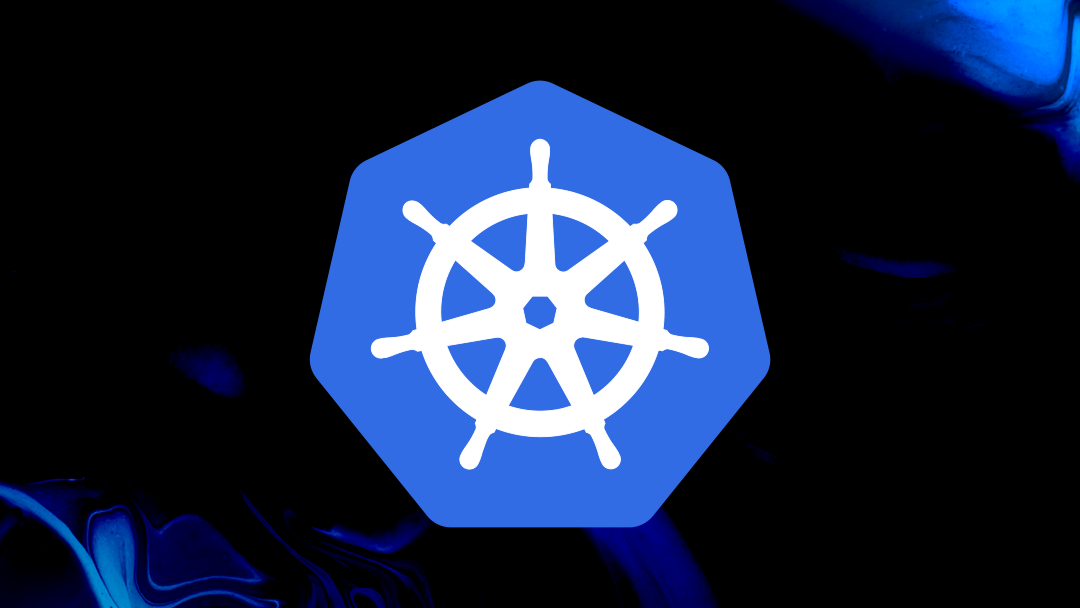Kubernetes has become one of the most transformative technologies in modern computing, driving the global shift toward scalable, resilient, and automated cloud infrastructure. Known as “K8s,” Kubernetes serves as the control plane for containerized applications, automating deployment, scaling, and management across clusters of servers. In just a few years, it has evolved from a Google-born internal system to the standard foundation of cloud-native architecture, underpinning nearly every major cloud platform and enterprise-grade software ecosystem.
To understand Kubernetes is to understand the engine of cloud scalability — how thousands of containers, microservices, and workloads can dynamically orchestrate themselves with efficiency and reliability across environments that range from private data centers to global public clouds. This article explores Kubernetes in depth: its origins, architecture, components, networking, and operational philosophy, as well as its impact on software development, DevOps, and the future of cloud computing.
The Origins of Kubernetes and Container Orchestration
Before Kubernetes, the world of application deployment was dominated by virtual machines and static infrastructure. Virtual machines offered isolation and flexibility but came with heavy overhead. Containers emerged as a more efficient solution — lightweight, portable, and fast to deploy. Tools like Docker made containerization accessible to developers, allowing them to package applications and their dependencies into self-contained units.
However, as organizations began deploying hundreds or thousands of containers, a new problem arose: managing them at scale. Containers needed to be scheduled on servers, balanced across resources, restarted upon failure, and updated seamlessly. Doing this manually was impractical.
Google had already solved this problem internally through systems like Borg and Omega, which managed massive distributed workloads for Google Search, Gmail, and YouTube. Kubernetes was born from this experience. In 2014, Google open-sourced Kubernetes as a modern, community-driven implementation of their internal orchestration principles. Its design emphasized declarative configuration, fault tolerance, and scalability — principles that became foundational to cloud-native computing.
Since then, Kubernetes has evolved into an ecosystem supported by the Cloud Native Computing Foundation (CNCF), backed by every major cloud provider and countless open-source contributors. Its flexibility, extensibility, and vendor-neutral design have made it the universal platform for orchestrating containerized applications across hybrid and multi-cloud environments.
The Core Philosophy of Kubernetes
At its heart, Kubernetes is a system for declarative state management. Rather than telling the system how to achieve a particular state, users declare what the desired state should be — for example, “run three instances of this application container.” Kubernetes continuously works to make the actual state of the system match this desired state. If one instance crashes, Kubernetes automatically restarts it. If traffic increases, Kubernetes can automatically scale up more instances to handle the load.
This approach abstracts away infrastructure complexity. Developers no longer need to manually configure servers or monitor individual processes. Instead, Kubernetes manages these details dynamically, enabling applications to be portable, resilient, and scalable by design.
The philosophy of Kubernetes also emphasizes immutability and automation. Containers represent immutable artifacts, meaning that once built, they do not change. Updates are achieved by deploying new versions rather than modifying running ones. This leads to consistency, reproducibility, and a simplified operational model that aligns with modern DevOps practices.
Another core principle is declarative configuration as code. Every aspect of a Kubernetes environment — from application deployments to networking policies — can be defined in YAML or JSON manifests. This configuration-driven approach allows version control, auditability, and automation through continuous integration and delivery pipelines.
The Architecture of Kubernetes
Kubernetes follows a distributed architecture composed of a control plane and a set of worker nodes. The control plane is responsible for global decisions, such as scheduling and maintaining the cluster’s desired state, while worker nodes run the actual application workloads in the form of containers.
The control plane consists of several key components that together form the brain of the cluster.
The kube-apiserver acts as the central management point and communication hub. All interactions — from users, controllers, or other components — go through the API server, which exposes a RESTful API interface.
The etcd component serves as the cluster’s backing store, maintaining all configuration data, state, and metadata in a consistent key-value format. It ensures that cluster information persists reliably even across node failures.
The kube-scheduler is responsible for deciding where to place workloads. It evaluates available resources, policies, and constraints before assigning containers to nodes.
The kube-controller-manager runs multiple controllers, each monitoring different aspects of the cluster. For instance, the replication controller ensures the correct number of pod replicas, while the node controller manages node health and availability.
The cloud-controller-manager, when integrated with public or private clouds, interacts with underlying cloud APIs to manage load balancers, storage volumes, and networking resources.
Worker nodes, sometimes referred to as data-plane components, host the actual applications. Each node runs three critical processes.
The kubelet communicates with the control plane to ensure containers are running as specified in the desired state. It pulls container images, manages lifecycle operations, and reports node status.
The kube-proxy handles network traffic routing and load balancing for services, ensuring that requests reach the correct pods.
The container runtime, such as containerd or CRI-O, executes and manages containers on the node.
Together, these components enable Kubernetes to function as a cohesive, self-healing, distributed system.
Pods: The Fundamental Execution Unit
In Kubernetes, the smallest deployable unit is the Pod. A pod encapsulates one or more containers that share storage, networking, and specifications for how they should run. Containers within a pod communicate via localhost and are always scheduled together on the same node.
Pods provide an abstraction that decouples application logic from underlying container runtimes. Rather than managing individual containers, Kubernetes manages pods as atomic units. This simplifies deployment, scaling, and lifecycle management.
When a pod is created, Kubernetes schedules it onto a node based on available resources and policy constraints. If the node fails, the pod is automatically rescheduled elsewhere. This design ensures high availability and resilience across the cluster.
Because pods are ephemeral by nature, they are not meant to persist data. For stateful workloads, Kubernetes provides persistent volumes that allow storage to remain intact even when pods are deleted or moved.
Deployments and ReplicaSets
While pods represent the execution unit, managing individual pods directly would be cumbersome. Kubernetes introduces Deployments as higher-level abstractions to manage multiple replicas of a pod. A Deployment defines the desired state — for instance, three replicas of a web application — and Kubernetes ensures that the actual state matches it.
Behind every Deployment is a ReplicaSet, which maintains the specified number of pod replicas. If a pod crashes or is deleted, the ReplicaSet automatically spawns a replacement. Deployments also facilitate rolling updates, enabling new versions of applications to be rolled out gradually without downtime.
By declaring the desired number of replicas and update strategy, developers can achieve continuous availability and safe updates, critical for production-grade systems.
Services and Networking
Kubernetes abstracts networking complexity through a powerful service model. Each pod in a cluster receives its own IP address, but since pods are ephemeral, direct addressing is unreliable. Services solve this by providing stable virtual IPs and DNS names that route traffic to healthy pods.
The ClusterIP service type exposes an application within the cluster, enabling internal communication between microservices. The NodePort and LoadBalancer service types extend accessibility externally, allowing users to reach applications from outside the cluster.
Behind the scenes, kube-proxy manages routing rules using iptables or IPVS to distribute traffic efficiently. Kubernetes’ service discovery mechanism integrates seamlessly with its DNS subsystem, allowing pods to communicate using standard domain names.
For more complex scenarios, the Ingress resource provides fine-grained HTTP routing and TLS termination. Ingress controllers, such as NGINX or Traefik, allow multiple services to share a single entry point, simplifying external access and management.
Networking in Kubernetes also depends on a Container Network Interface (CNI) plugin, which handles low-level connectivity between pods and nodes. Popular CNIs like Calico, Flannel, and Cilium enable secure, performant, and policy-driven networking for clusters of any size.
Storage and Persistent Volumes
Many applications require durable data storage that outlives container lifecycles. Kubernetes addresses this through a flexible storage architecture centered around Persistent Volumes (PVs) and Persistent Volume Claims (PVCs).
A Persistent Volume represents a piece of storage in the cluster, which could come from cloud providers, network-attached storage, or local disks. A Persistent Volume Claim is a request for storage by a user or application. Kubernetes binds claims to available volumes dynamically, enabling portability across environments.
The StorageClass resource defines provisioning behavior, allowing Kubernetes to automatically create and manage storage based on performance and replication requirements. In cloud environments, this often integrates directly with managed storage systems such as AWS EBS, Azure Disk, or Google Persistent Disk.
This abstraction allows developers to write applications that rely on persistent data without worrying about where or how the storage is provisioned, promoting a consistent and scalable approach to stateful workloads.
Scaling Applications in Kubernetes
Scalability lies at the heart of Kubernetes’ design philosophy. Kubernetes enables both horizontal scaling — increasing or decreasing the number of pods — and vertical scaling, which adjusts the resource allocation of individual pods.
The Horizontal Pod Autoscaler (HPA) monitors metrics such as CPU and memory utilization and automatically scales the number of replicas to match demand. Similarly, the Vertical Pod Autoscaler (VPA) analyzes resource consumption and recommends or applies changes to resource limits.
For large-scale environments, the Cluster Autoscaler extends this concept by dynamically adding or removing worker nodes based on overall cluster utilization. Together, these components form a self-regulating ecosystem that adapts automatically to fluctuating workloads, ensuring optimal performance and cost efficiency.
Kubernetes’ declarative nature means scaling can occur seamlessly without manual intervention. When demand spikes, new pods are scheduled automatically, and when it decreases, unused resources are released. This elasticity makes Kubernetes an ideal foundation for cloud-native applications where workload patterns are unpredictable.
Resource Management and Scheduling
Efficient resource allocation is vital in multi-tenant and large-scale clusters. Kubernetes uses resource requests and limits to define how much CPU and memory each pod requires. The scheduler uses this information to place pods on nodes with sufficient available resources, preventing contention and ensuring fairness.
Quality of Service (QoS) classes further refine resource allocation. Pods with guaranteed resources receive higher scheduling priority and stability compared to best-effort pods that share leftover capacity. This hierarchy allows mission-critical workloads to coexist with less important ones within the same cluster.
Advanced scheduling features such as node affinity, taints, and tolerations enable fine-grained control over workload placement. Administrators can ensure that specific workloads run only on certain types of nodes, such as GPU-equipped machines or nodes in specific geographic regions.
Observability and Monitoring
A key strength of Kubernetes is its built-in observability ecosystem. The platform exposes metrics, logs, and events that provide visibility into cluster health and application performance.
The Metrics Server collects resource usage data that feeds into autoscaling components. For more detailed monitoring, Prometheus is widely used as the de facto standard. It scrapes metrics from Kubernetes components and application endpoints, offering powerful querying and alerting capabilities.
Visualization tools like Grafana provide real-time dashboards that track cluster performance and application-level metrics. Logs from containers and system components can be centralized using tools such as Fluentd, Loki, or Elasticsearch, allowing operators to trace and troubleshoot issues efficiently.
Kubernetes’ event-driven design ensures that changes and failures are observable through API events. Integrations with alerting systems ensure rapid detection and remediation of issues, making large-scale operations manageable and reliable.
Security in Kubernetes
Security is integral to Kubernetes design but requires careful configuration and continuous vigilance. The platform employs a multi-layered approach combining authentication, authorization, network policies, and runtime security.
Authentication mechanisms include service accounts, tokens, and integration with identity providers through OpenID Connect. Role-Based Access Control (RBAC) governs what actions users or components can perform, ensuring the principle of least privilege.
Network policies restrict communication between pods, allowing only explicitly permitted traffic. This segmentation prevents lateral movement of potential attacks. Pod security standards define what privileges containers can have, preventing the execution of untrusted or privileged workloads.
At runtime, Kubernetes integrates with security scanners and policy engines such as Kyverno or Open Policy Agent (OPA) to enforce compliance and detect vulnerabilities. Image signing and scanning further ensure that only verified, trusted images are deployed.
Properly implemented, Kubernetes security establishes a robust defense posture suitable for multi-tenant, production-grade environments.
Continuous Deployment and DevOps Integration
Kubernetes has become the backbone of modern DevOps pipelines. Its declarative configuration model integrates seamlessly with Continuous Integration and Continuous Deployment (CI/CD) systems. Tools like Argo CD and Flux enable GitOps workflows, where version-controlled repositories define the desired state of the cluster.
This approach ensures consistency and traceability. Any change to the application or infrastructure is recorded as a commit, automatically synchronized to the running cluster. Automated rollback mechanisms provide resilience against deployment errors.
Kubernetes’ flexibility also supports blue-green and canary deployment strategies. New versions of an application can be deployed alongside old ones, gradually shifting traffic to minimize risk. This aligns perfectly with agile development practices where frequent, safe releases are essential.
By bridging the gap between development and operations, Kubernetes fosters collaboration, accelerates release cycles, and promotes automation — the core tenets of DevOps.
Kubernetes in the Cloud-Native Ecosystem
Kubernetes is not just an orchestration platform but the foundation of an entire ecosystem known as cloud-native computing. Around Kubernetes, hundreds of complementary projects have emerged, addressing every aspect of distributed application lifecycle management.
Service meshes such as Istio, Linkerd, and Kuma provide advanced traffic management, observability, and security for microservices. Operators extend Kubernetes’ functionality by encoding operational logic into custom controllers that automate complex tasks like database scaling or certificate management.
Serverless frameworks like Knative build on Kubernetes to enable event-driven, on-demand execution, combining the flexibility of containers with the simplicity of function-as-a-service architectures.
The ecosystem’s richness stems from Kubernetes’ extensible API. Custom Resource Definitions (CRDs) allow developers to introduce new object types, transforming Kubernetes into a universal control plane capable of managing not just containers but entire infrastructures.
Multi-Cloud and Hybrid Kubernetes Deployments
As enterprises diversify their cloud strategies, Kubernetes serves as the unifying layer across heterogeneous environments. Its vendor-neutral design enables applications to run consistently across on-premises, private, and public clouds.
Hybrid deployments allow organizations to combine on-premises control with cloud elasticity. Tools like Rancher, OpenShift, and Anthos simplify management across clusters, providing centralized control planes for governance and observability.
Multi-cloud strategies leverage Kubernetes to avoid vendor lock-in. Workloads can be distributed dynamically across providers like AWS, Azure, and Google Cloud, optimizing for cost, performance, or compliance. Federation technologies extend this concept by enabling coordinated resource management across multiple clusters.
This portability and interoperability make Kubernetes the de facto standard for enterprises seeking flexibility in their cloud architectures.
Challenges and Best Practices
Despite its power, Kubernetes introduces complexity that requires disciplined operational practices. Managing large clusters demands expertise in networking, storage, and security. Misconfigured resources can lead to instability or inefficiency.
Best practices include treating configurations as code, enforcing resource limits, and implementing robust monitoring and alerting systems. Regular upgrades and security patches are essential to maintain cluster health.
Developers should design cloud-native applications that embrace statelessness, fault tolerance, and horizontal scalability. Avoiding tight coupling between services ensures that Kubernetes can leverage its orchestration capabilities fully.
While Kubernetes automates much of infrastructure management, human oversight and well-defined governance remain crucial. Establishing clear policies for namespace usage, access control, and deployment pipelines ensures long-term stability and maintainability.
The Future of Kubernetes and Cloud Scalability
Kubernetes continues to evolve rapidly, expanding its capabilities beyond container orchestration into the realm of general-purpose distributed systems management. Emerging developments such as Kubernetes-native AI workloads, edge computing, and serverless expansion signal its growing influence.
In artificial intelligence, Kubernetes has become the foundation for deploying large-scale machine learning pipelines. Frameworks like Kubeflow streamline training, tuning, and serving models, leveraging Kubernetes’ scalability for computationally intensive workloads.
At the edge, Kubernetes is being optimized for lightweight, resource-constrained environments. Projects like K3s and MicroK8s bring Kubernetes’ orchestration power to IoT devices, retail stores, and industrial facilities, enabling unified control across diverse infrastructures.
Future iterations of Kubernetes will likely integrate tighter security controls, enhanced automation through AI, and better abstractions for developers. As it matures, Kubernetes is poised to remain the control plane for the digital universe — the engine behind the scalable, intelligent systems that power the modern world.
Conclusion
Kubernetes represents a paradigm shift in how we design, deploy, and scale applications in the cloud. It abstracts away the complexities of infrastructure, turning clusters of machines into unified, self-healing platforms that can adapt dynamically to demand.
By orchestrating containers efficiently and providing a declarative, automated framework, Kubernetes enables organizations to achieve levels of scalability, resilience, and agility once reserved for the largest technology companies.
As the backbone of the cloud-native movement, Kubernetes empowers developers to focus on innovation rather than infrastructure. Its ecosystem continues to grow, bridging the gap between data centers, clouds, and the edge.
In a world increasingly defined by distributed systems and dynamic workloads, Kubernetes stands as the cornerstone — the engine that makes cloud scalability not just possible, but practical, reliable, and universal.






